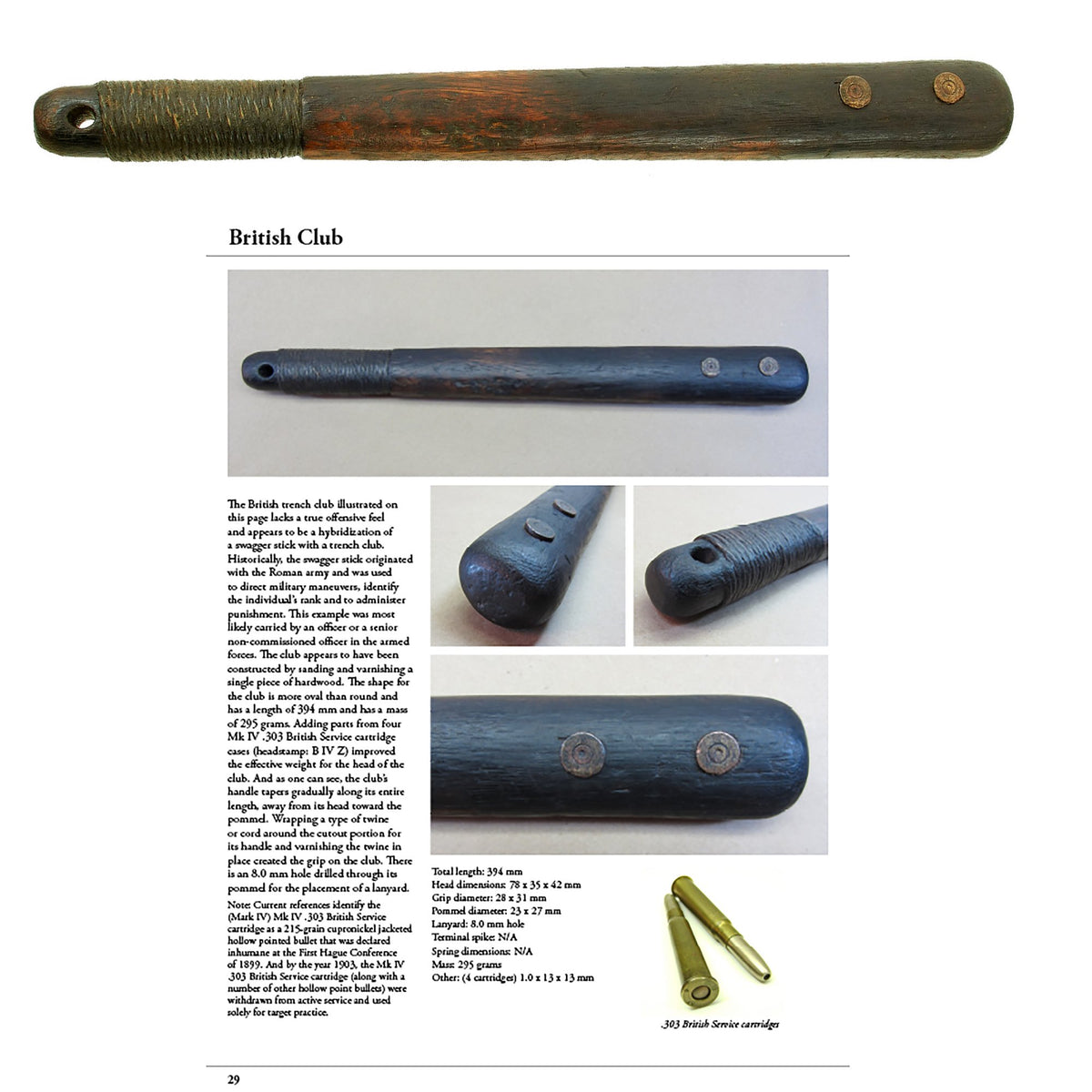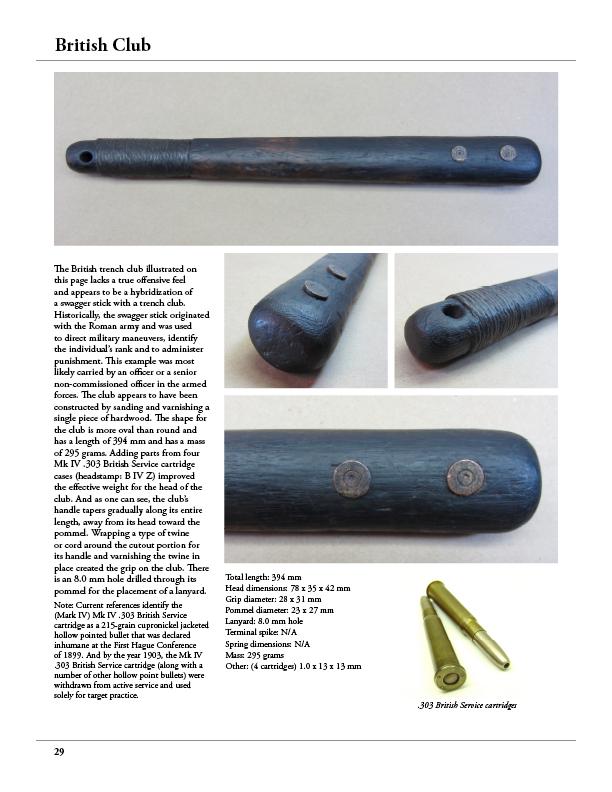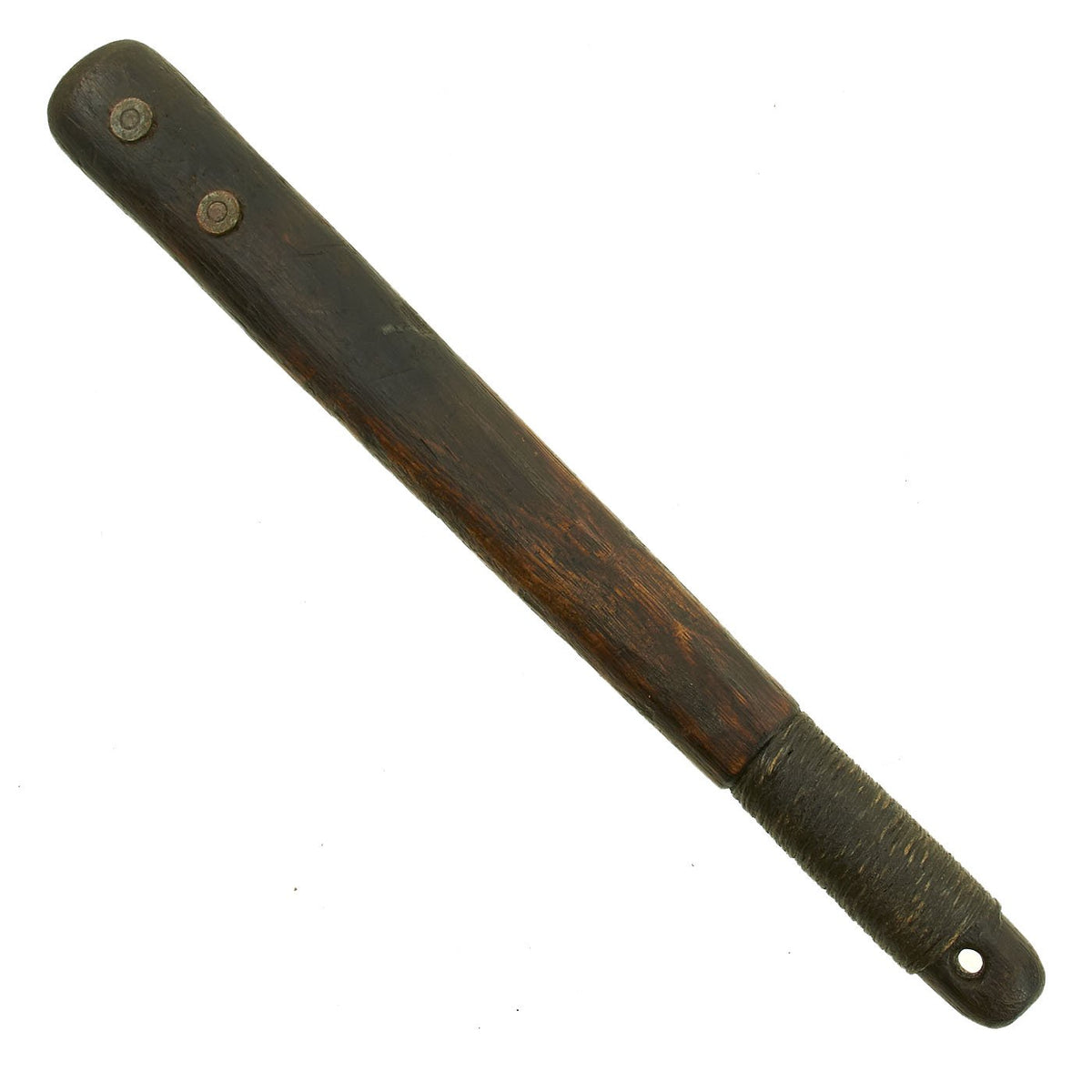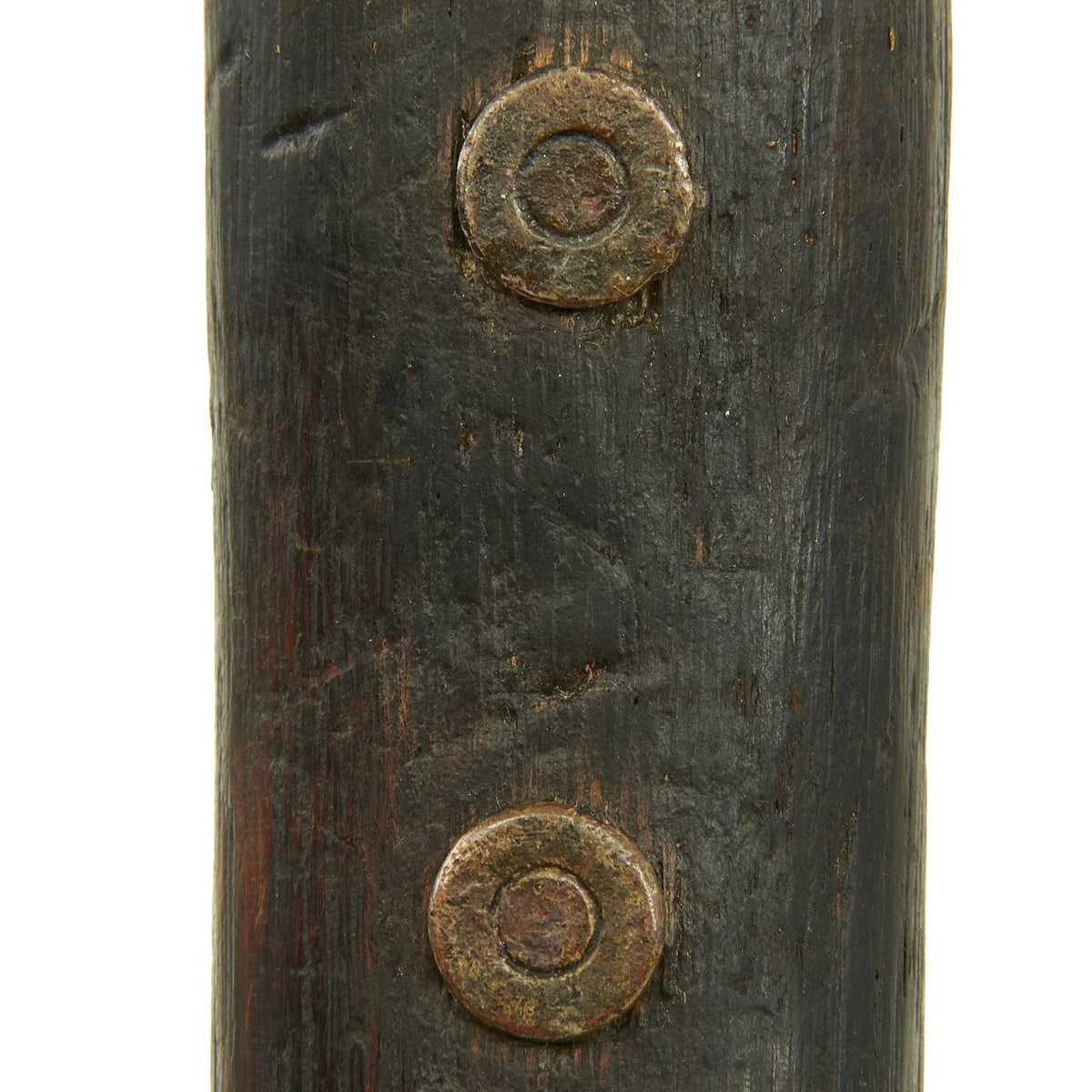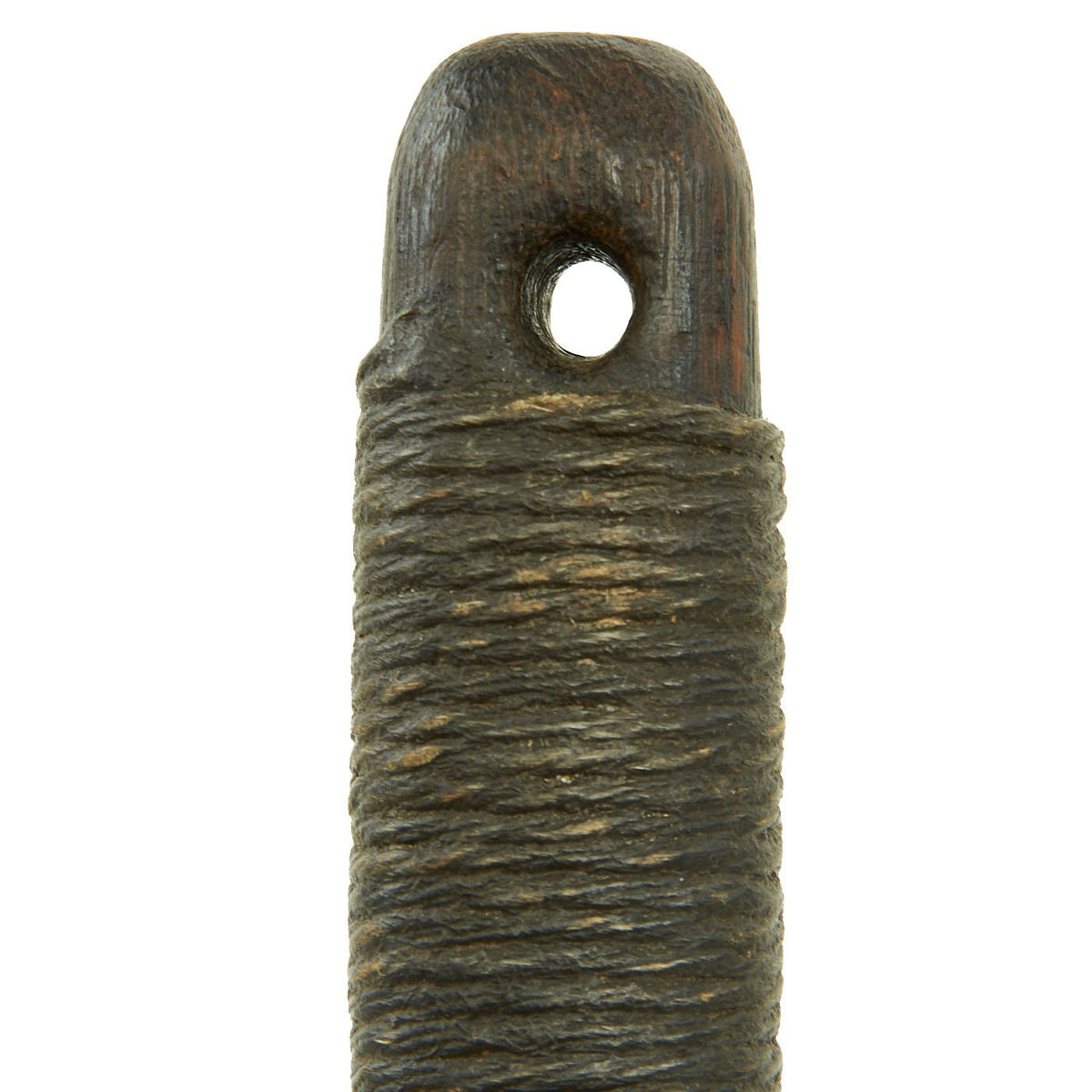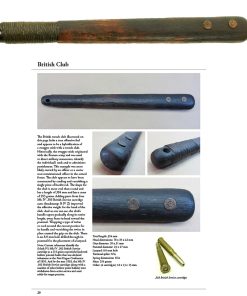Original British WWI Trench Raiding Club – Featured in Book At Arm’s Length on Page 29 Original Items
$ 995,00 $ 248,75
Original Item: Only One Available. Just purchased from a private collector, this is a trench club that was used as an example in At Arm’s Length: Trench Clubs and Knives by David F. Machnicki. This very club was photographed and described, and is featured on page 29! Please note that the attached page image and copy from the book is copyrighted material and the use of the page is done solely by permission of the author.
The British trench club illustrated on this page lacks a true offensive feel and appears to be a hybridization of a swagger stick with a trench club. Historically, the swagger stick originated with the Roman army and was used to direct military maneuvers, identify and individual’s rank, and to administer punishment. This example was most likely carried by an officer or senior non-commissioned officer in the armed forces. The club appears to have been constructed by sanding and varnishing a single piece of hardwood. The shape for the club is more oval than around and has a length of 394 mm and has a mass of 295 grams. Adding parts from four Mk IV .303 British Service cartridge cases (headstamp; B IV J) improved the effective weight for the head of the club. And as one can see, the club’s handle tapers gradually along its entire length, away from its head toward the pommel. Wrapping a type of twine or cord around the cutout portion for its handle and varnishing the twine in place created the grip on the club. There is an 8.0 mm hole drilled through its pommel for the placement of lanyard.
Total length: 394 mm
Head dimensions: 78 x 35 x 42 mm
Grip diameter: 28 x 31 mm
Pommel diameter: 23 x 27 mm
Lanyard: 8.0 mm hole
Mass. 295 grams
Other: (4 cartridges) 1.0 x 13 x 13 mm
Trench raiding clubs were homemade melee weapons used by both the Allies and the Central Powers during World War I. Clubs were used during nighttime trench raiding expeditions as a quiet and effective way of killing or wounding enemy soldiers. The clubs were usually made out of wood. It was common practice to fix a metal object at the striking end (e.g. an empty Mills bomb) in order to maximize the injury inflicted. Another common design comprised a simple stave with the end drilled out and a lead weight inserted, with rows of large hobnails hammered in around its circumference. Most designs had some form of cord or leather strap at the end to wrap around the user’s wrist. Bosnian soldiers serving in the Austro-Hungarian army were fond of using maces. They were also used by officers to finish enemy soldiers wounded by poison gas attacks.
Trench clubs were manufactured in bulk by units based behind the lines. Typically, regimental carpenters and metal workers would make large numbers of the same design of club. They were generally used along with other “quiet” weapons such as trench knives, entrenching tools, bayonets, hatchets and pickaxe handles – backed up with revolvers and hand grenades.
Fast Shipping with Professional Packaging
Thanks to our longstanding association with UPS FedEx DHL, and other major international carriers, we are able to provide a range of shipping options. Our warehouse staff is expertly trained and will wrap your products according to our exact and precise specifications. Prior to shipping, your goods will be thoroughly examined and securely secured. We ship to thousands clients each day across multiple countries. This shows how we're dedicated to be the largest retailer on the internet. Warehouses and distribution centres can be located throughout Europe as well as the USA.
Note: Orders with more than one item will be assigned a processing date depending on the item.
Before shipping before shipping, we'll conduct a thorough inspection of the items you have ordered. Today, the majority of orders will be delivered within 48 hours. The delivery time will be between 3-7 days.
Returns
The stock is dynamic and we cannot completely manage it because multiple stakeholders are involved, including our factory and warehouse. So the actual stock may alter at any time. It's possible that you may not receive your order once the order has been made.
Our policy is valid for a period of 30 days. If you don't receive the product within 30 days, we are not able to issue a refund or an exchange.
You can only return an item if it is unused and in the same state as the day you received it. You must have the item in its original packaging.
Related products
Uncategorized
Armored Burgonet Helmet & Polearm from Scottish Castle Leith Hall Circa 1700 Original Items
Uncategorized
Uncategorized
Uncategorized
Uncategorized
Uncategorized
Uncategorized
Uncategorized
Uncategorized
Uncategorized
Uncategorized
Uncategorized
Uncategorized
Uncategorized
Uncategorized
Uncategorized
Uncategorized
Band of Brothers ORIGINAL GERMAN WWII Le. F.H. 18 10.5cm ARTILLERY PIECE Original Items
Uncategorized
Armoured Fighting Vehicles of the World: AFVs of World War One (Hardcover Book) New Made Items
Uncategorized
